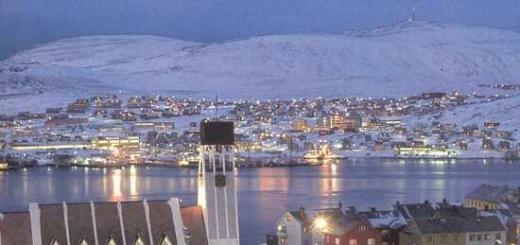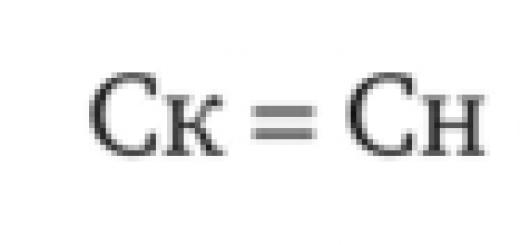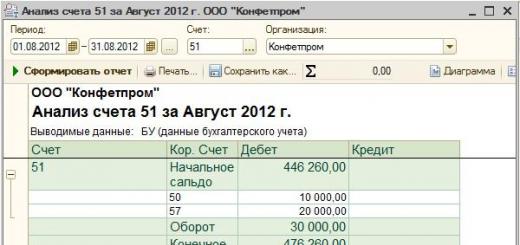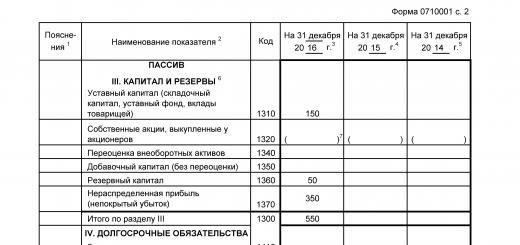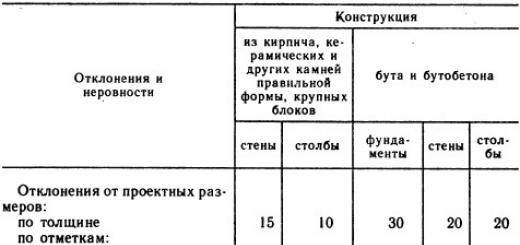The living wage is valuation consumer basket, which characterizes the minimum set of goods and services necessary in order to maintain human health and ensure its vital activity. This indicator serves as a state guarantee that citizens of the Russian Federation will receive minimum cash income and other social protection measures. It can be defined per capita and for the main socio-demographic groups of the population - able-bodied, pensioners and children. Since it is the size of the subsistence minimum that determines the standard of living of the population, it can somehow affect every citizen of the country. In the proposed article you will find answers to typical questions about this indicator - why is it needed, who sets it, in what time frame and what does it affect, and also where can you always find the current subsistence level and in what documents?
For the first time living wage as a whole in the Russian Federation was established from January 1, 1998. It was introduced as a cost equivalent, which was intended to justify the value of the minimum "size" of wages - the so-called minimum wage. Article 2 federal law No. 134-FZ of October 24, 1997 "On the subsistence minimum in the Russian Federation" with the help of the subsistence minimum in Russia as a whole at the federal level:
- the standard of living of the population of Russia is assessed in the course of the development and implementation of social federal programs;
- justifies the minimum “size” of wages established at the federal level;
- the sizes established at the federal level, scholarships and other social payments are determined;
- formed the federal budget.
You should know that the cost of living is not at all some kind of abstraction. On the contrary, this is an important indicator, based on which citizens can be and receive the right to benefits and.
When is a family or single person considered poor?
In particular, the size of the living wage is important for people who can be recognized as poor. This is the most socially unprotected category of citizens, which can receive additional benefits from the state. A citizen or a family is considered if the income of each family member or single person is less than the subsistence level, which is established in this subject Russian Federation. Such a family has the right to receive state social assistance. The procedure for its provision is established by federal as well as regional laws and, above all, No. 178-FZ “On State Social Assistance”.
Living wage in 2017
In accordance with Decree of the Government of Russia No. 730 of June 20, 2017 “On the establishment of the subsistence minimum per capita and for the main socio-demographic groups of the population as a whole in the Russian Federation for the 1st quarter of 2017”, this minimum for a Russian in the first quarter amounted to 9909 rubles. Compared to the fourth quarter of 2016, the indicator increased by 208 rubles, which is explained by inflation.
 Decree of the Government of the Russian Federation of June 20, 2017 No. 730 “On the establishment of the subsistence minimum per capita and for the main socio-demographic groups of the population as a whole in the Russian Federation for the 1st quarter of 2017.”
Decree of the Government of the Russian Federation of June 20, 2017 No. 730 “On the establishment of the subsistence minimum per capita and for the main socio-demographic groups of the population as a whole in the Russian Federation for the 1st quarter of 2017.” The amount of 9909 rubles is the average for the country and varies for individual groups of the population. So, for able-bodied citizens, the subsistence minimum is set at 10,701 rubles, for pensioners - 8,178, and for children - 9,756 rubles.
When compared with the fourth quarter of 2016, for pensioners and able-bodied population the subsistence minimum increased by 2.2%, for children - by 3.4%. At the same time, inflation officially recognized by Rosstat in the first quarter of this year amounted to 1.2%. In January-March, food prices rose by 1.7%, and the prices for fruits and vegetables jumped the most. Thus, the price of onions increased by 13.3%, potatoes - by 11.4%, carrots - by 6.7%, cabbage - by 3.6%, beets - by 1.8%.
Prices for dairy products increased: butter by 8.6%, cheese - by 4.2%, sour-milk products - 3.1%, sour cream - 2.7%, milk - 2.4%. Bread and bakery products made from wheat flour went up in price by 1.8%, rye and rye-wheat bread - by 0.7%.
At the same time, prices for some cereals slightly decreased: from 0.7% for semolina to 5.8% for millet. The cost of meat and fish products has not changed much. With this in mind, food products as part of the subsistence minimum per capita increased by 2.3%.
Are your monthly incomes higher than the subsistence level (9909 rubles)?
Poll Options are limited because JavaScript is disabled in your browser.
By whom and when is the living wage set?
The subsistence minimum per capita and for individual groups both in Russia as a whole and in the regions is determined based on the consumer basket and information from the State Statistics Committee on consumer prices for goods and services, as well as the costs of mandatory fees and payments. The average indicators for the country are determined by the Decree of the Government of the Russian Federation in accordance with the federal law “On the Living Wage in the Russian Federation”, and the regional ones are determined by the executive authorities of the regions of Russia. At all levels, this indicator is determined quarterly by the 30th day of the month following the end of the quarter. This means January 30th, April 30th, July 30th and October 30th.
 Consumer basket in accordance with the Federal Law of December 3, 2012 N 227-FZ “On the consumer basket as a whole in the Russian Federation”
Consumer basket in accordance with the Federal Law of December 3, 2012 N 227-FZ “On the consumer basket as a whole in the Russian Federation” Where can I find out the current living wage?
In the country as a whole, data on the subsistence minimum are quarterly published in the publications of the Government of the Russian Federation and on its official website. According to the regions of the Russian Federation, they are published by the official publications of the executive authorities of the constituent entities.

Also, this information will be provided to you in the social security authorities - social security, in the offices of the State Statistics Committee of the regions and in the office of the deputy head of the regional administration in charge social issues. With these data, each citizen will be able to determine what kind of social assistance and in what amount he can receive from the state.
Is it possible to “live” on a living wage?
The slowdown in inflation and the recovery of economic growth are reflected in the reduction in the cost of living in 2017. According to the Ministry of Labor, in the last quarter of 2016, this indicator decreased by an average of 2%. At the same time, the minimum wage continues to lag significantly behind the subsistence level. The government plans to correct this trend within three years.
Reduction of the living wage: prospects for 2017
The slowdown in inflation leads to an actual reduction in the subsistence minimum, representatives of the Ministry of Labor say. According to Rosstat, price growth in October-December 2016 amounted to 1%, which confirms the recovery of positive dynamics domestic economy.
As a result, the average subsistence minimum is about 9.7 thousand rubles. For pensioners, this indicator dropped to 8 thousand rubles, for children to 9.4 thousand rubles, and for working citizens to 10.5 thousand rubles. The average reduction of the index reached 2%.
Officials predict a further reduction in inflation in 2017, which will be reflected in the cost of living. At the same time, the level of the minimum wage continues to lag behind the subsistence level. Despite the intentions of officials to increase the minimum wage by 4% from July 2017, this figure will amount to 7.8 thousand rubles, which is almost 2 thousand below the subsistence level.
Experts note that the reduction of the minimum will affect the amount of social payments and additional payments from the budgets of various levels. As a result, the government will be able to reduce the budget deficit, which will increase the stability of the financial system.
Budget Savings
After the crisis began, the government faced a serious problem. The budget deficit exceeded 3% of GDP, which forced officials to use alternative sources to finance the expenditure side. First of all, the funds of the Reserve Fund were used, which, according to the results of 2016, were almost exhausted.
The living wage is taken into account when calculating various social benefits. The economic crisis and the devaluation of the ruble led to an increase in inflation in 2014-2015. As a result, this indicator reached its maximum level in April-May 2015, exceeding 10 thousand rubles.
Social expenditures make up a significant part of the domestic budget expenditures. In a crisis, officials are forced to cut costs, including adjusting the cost of living to take into account the slowdown in inflation.
In the future, the cost of living will continue to decline, experts say. In 2017 Russian economy restore positive momentum. Reacting to the strengthening of the ruble, prices will remain stable. As a result, the cost of living will be 9-9.5 thousand rubles. In addition, the correlation of this indicator with the minimum wage remains an important issue.

Lagging minimum wage
Since January 1, 2017, the minimum wage remains at the level of 7.5 thousand rubles, which is significantly behind the subsistence level. According to the estimates of the head of the Ministry of Labor Maxim Topilin, the government will need three years to equalize these indicators. At the same time, the minister emphasizes that it is necessary to take into account regional specifics. The cost of living in different regions varies significantly, as a result, the use of a differentiated approach will become more appropriate.
The government expects to restore budget revenues. Oil prices, which make up the lion's share of exports, will continue to rise over the coming years. The reduction in oil production will make the market of "black gold" scarce, which will affect the movement of price quotations.
Officials' optimism may not be justified, experts warn. The dynamics of the domestic economy continues to depend on external factors, including oil prices. The cost of "black gold" retains significant volatility. Analysts allow a new collapse of quotations if the agreement to reduce oil production is thwarted. Moreover, the development of geopolitical factors remains a significant degree of uncertainty. In the short term, the further fate of the sanctions will be determined, which will have a significant impact on the Russian economy.
The cost of living continues to decline in response to the slowdown in inflation. According to the results of the last quarter of 2016, the minimum amounted to 9.7 thousand rubles. In the future, experts predict a decrease in the indicator to 9 thousand rubles.
In January 2017, the minimum wage remains 7.5 thousand rubles, which is almost 2 thousand rubles less than the subsistence level. The next increase in the minimum wage is scheduled for July this year. The government will be able to equalize these indicators within three years.
Lowering the cost of living will reduce budget spending. As a result, the government will be able to balance the state treasury.
From 07/01/2017 and the regional "minimum wage" we talked about the size of the minimum wage in ours. We will talk about the relationship between the minimum wage and the subsistence minimum, as well as the value of the latter for the 2nd quarter of 2017, in our consultation.
What is a living wage?
The living wage is the cost estimate of the consumer basket, as well as mandatory payments and fees (Article 1 of the Federal Law of October 24, 1997 No. 134-FZ). The consumer basket includes the minimum set of food products necessary for human life and health, as well as non-food products and services.
Minimum wage = living wage?
The Labor Code of the Russian Federation establishes that the size of the minimum wage cannot be lower than the subsistence level of the able-bodied population (part 1 of article 133 of the Labor Code of the Russian Federation). The living wage for the able-bodied population as a whole in the Russian Federation for the 1st quarter of 2017 is 10,701 rubles (Decree of the Government of the Russian Federation of 06/20/2017 No. 730). But after all, the current minimum wage in the amount of 7,800 rubles, even after its increase (Federal Law No. 460-FZ of December 19, 2016), does not reach the subsistence level. This discrepancy is explained by the fact that it is planned to increase the minimum wage to the subsistence level in stages. The procedure and terms for this increase must be established by the Federal Law (Article 421 of the Labor Code of the Russian Federation). But such a federal law has not yet been adopted. Therefore, the prospect of bringing the minimum wage and the subsistence minimum into line is still rather vague, and the contradiction that has arisen in connection with the requirements of Part 1 of Art. 133 of the Labor Code of the Russian Federation to economic realities is still insoluble.
As for the compliance of the regional minimum wage with the subsistence minimum of a constituent entity of the Russian Federation, the Labor Code of the Russian Federation provides that the “minimum wage” is set taking into account socio-economic conditions and the subsistence minimum of the able-bodied population in the corresponding constituent entity of the Russian Federation. This means that there is no strict rule “regional minimum wage = regional subsistence minimum”. However, regional agreements may provide that the minimum wage is set at the subsistence level. So, for example, in clause 3.1.1 of the Moscow tripartite agreement on the minimum wage, it is indicated that the “minimum wage” is reviewed quarterly and is set in the amount of the subsistence minimum for the able-bodied population of the city of Moscow. At the same time, the new minimum wage comes into force on the 1st day of the month following the month of entry into force of the resolution of the Government of Moscow, which established the subsistence minimum (clause 3.1.2 of the Agreement). Moreover, if the cost of living decreases, the minimum wage will not change. So, for example, the living wage for the working-age population in Moscow in the first quarter of 2017 amounted to 17,642 rubles (Decree of the Government of Moscow dated June 13, 2017 No. 355-PP). This Decree came into force on 06/25/2017. Therefore, the minimum wage in Moscow from 07/01/2017 is also set at 17,642 rubles.
When and by whom is the living wage set?
In general, the subsistence minimum per capita and for the main socio-demographic groups, both in the country as a whole and in the constituent entities of the Russian Federation, is calculated quarterly based on the consumer basket and Rosstat data. The latter provides the following information to determine the subsistence minimum (clause 1, article 4 of the Federal Law of October 24, 1997 No. 134-FZ):
- the level of consumer prices for food products;
- consumer price indices for food, non-food products and services;
- indexes of expenditures on obligatory payments and fees.
The federal subsistence minimum is established by the Government of the Russian Federation, and the regional one is established in the manner established by the relevant subject of the Russian Federation (clause 2, article 4 of the Federal Law of October 24, 1997 No. 134-FZ).
Given that it takes time to obtain and process statistical data, the subsistence minimum is not approved immediately after the end of the quarter. At the time of preparation of the material, the subsistence minimum for the 2nd quarter of 2017 had not yet been published. The experience of past years shows that the federal subsistence minimum for the 2nd quarter is not ready until August, and, for example, in 2013 it was only calculated in October.
Of course, every person is concerned about the size and value of the subsistence minimum established in his country, because it is he who determines the standard of living of the population for the coming 2017.
What is a living wage
The living wage is a certain monetary value, which is collected from two components: physiological and social. The physiological part of the subsistence minimum (PM) is almost 90% of the total amount. It includes the cost of the minimum food basket, which is necessary for the healthy functioning of the body, as well as the minimum set of goods of non-food origin, thanks to which the normal functioning of a person in society is carried out, taking into account the necessary costs. The social part of the PM is usually 10-12% and is a set of spiritual values necessary for an adequate life, the level of which is also set to a minimum.
The subsistence minimum in 2017 in Russia. Forecast
It should be noted that the size of the subsistence minimum in Russia is determined quarterly by the Government of the Russian Federation, which, in turn, is guided by the consumer basket, as well as data from a special federal executive body. authorities on statistics.
Recall that for the 1st quarter of 2016, the Government of the Russian Federation (dated June 9, 2016) established the following value of PM: per capita - 9776 rubles, for pensioners - 8025 rubles, for the working population - 10524 rubles, for children 9677 rub.
And yet what will living wage 2017? According to the forecasts of the Ministry of Economic Development of the Russian Federation, the value of the PM of a pensioner, in general in Russia, should be from 8922 to 9252 rubles Everything will depend on how the country's economy develops. For example, at the moment in the Nizhny Novgorod region, a bill has been adopted that establishes a minimum living wage for 2017, according to its data, in this region, in 2017, from January 1, the following living wage will be set: for a pensioner - 8082 rubles, at the moment - 7992 rubles, (see whether they will raise it in Russia.
What is the cost of living and what does it affect?
The PM determines the amount of material benefits to the population, scholarships and other social payments. Also, according to the calculated PM, and the state budget, and the local budget of various districts. The higher the subsistence minimum, the easier and richer life in the country, of course. It should be noted that due to the crisis of 2016, the PM fell from 10,017 rubles (for the 2nd quarter of 2015) to 9,776 rubles in the 1st quarter of 2016. But due to the high level of inflation in the Russian Federation, these figures will grow in 2017. For example, if the current year's inflation is 12%, then ideally, the PM for the population will be increased by this amount.
It should be noted that in the last quarter of 2015, more than 18% of the Russian population had an income below the established subsistence level.
When it comes to the living conditions of the population, the subsistence minimum comes to the fore as one of the main evaluation criteria. This indicator is fixed by law for several purposes.
Below IQReview will consider in detail all the nuances associated with this important characteristic both for the country's economy and for an individual citizen.
According to Wikipedia, this is the minimum level of income required to provide a certain standard of living for one person.
In other words, PM the total price of the consumer basket for the month. It includes:
Food: 50% of the amount.
Expenses for utility bills, medical care (25%).
Non-food items (25%). This includes hygiene products, clothes, shoes, household chemicals.
Calculated individually for each regionand for certain categories of citizens.For the country, the size of the subsistence minimum is determined by the government, by regions - by self-government bodies.
According to law subsistence level should be recalculated at least once every 5 years. In fact, this indicator is reviewed annually.
The following factors are relevant for legislative approval:
The need of a citizen for food and non-food products.
Climatic conditions of individual regions.
Current prices for items included in the shopping cart.
… why is it needed...
P M - value used for statistics and analytics. It can be used to determine:
The standard of living of the state as a whole and regions separately.
The dynamics and quality of the implementation of reforms and various programs aimed at improving the welfare of citizens.
Percentage of citizens who require material support from the state.
T The set size is also used when:
budgeting(federal and individual subjects);
calculation of the size of pensions, minimum wages, allowances, scholarships, alimony;
planning and implementation of socio-economic programs and reforms.
... and how does it happen?
PM can be conditionally divided according to several factors.
Economists in calculations and analytics distinguish:
Vital PM - includes vital products and services.
Social PM - includes expenses for spiritual and social needs.
The main criterion in determining the PM is the age category of citizens. In accordance with this, distinguishliving wage per child, living wage for a pensionerand for the working citizen.
Calculation rules
To calculate the final amount, the current prices for a fixed list of products are taken. For each type of product, a certain norm (in kilograms or units) is established for the year. To calculate the monthly PM, the annual basket is divided by 12.
Grocery basket base
The price tag for products, goods and services is taken as an average for the country. This is one of the reasons for the miscalculation.
What is included?
The current composition of the consumer basket in the Russian Federation was approved back in 2013 and has not changed since then. It is expected that the list will be revised next year - 2018.
Since the bulk of the population is made up of able-bodied citizens, we will consider the list specifically for them. The year is subject to:
Bread and pasta, flour - 126.5 kg.
Potatoes - 100.4 kg.
Vegetables - 114 kg.
Fruit - 60 kg.
Confectionery, sugar - 24 kg.
Meat - 58.5 kg.
Fish - 19 kg.
"Milk" - 290 kg.
Eggs - 210 pieces.
Oils - 10 kg.
"Other food products" (this includes tea, coffee, spices, seasonings, salt) - 5 kg.
The cost of living for a child is calculated on the basis of such an annual consumer basket -
Bread and pasta, flour - 76.6 kg.
Potatoes - 88.1 kg.
Vegetables - 112.5 kg.
Fruit - 118.1 kg.
Sugar, confectionery - 21.8 kg.
Meat - 44 kg.
Fish - 18.6 kg.
"Milk" - 360.7 kg.
Eggs - 201 pieces.
Oils - 5 kg.
"Other food products": 3.6 kg.
Least of all products, according to the consumer basket compiled by the government, are “needed” for the life of pensioners.
 Consumer basket of non-food products
Consumer basket of non-food products Regarding services:
For each resident, regardless of his age group, 18 "squares" of living space are required.
Heating - 6.7 Gcal per year.
Cold and hot water - 10 "cubes" monthly.
Electricity - 50 kW monthly.
trips to public transport- 619 for adults, 150 for pensioners and 396 for children.
Another 5% of the amount for services is for culture, and another 15% for "other" expenses.
Size for 2017
The cost of living for a child is 9396 rubles.
The living wage for a pensioner is 7951 rubles.
PM for an able-bodied resident - 10436 rubles.
This is the average subsistence minimum in 2017 for three categories of the population. For different regions of the Russian Federation, the amount of payments may differ, both up and down. In large cities and northern regions, the size of the PM is significantly higher than that adopted in the country. In small regions, on the contrary, the amount of payments may be lower.
In this case, subsidies are credited to the regional treasury for compensation from the federal budget. Because of this, some constituent entities of the Russian Federation deliberately underestimate the PM for their region in order to receive subsidies.
For comparison, here is a table with data for several cities in Russia:
| Subject | Living wage per child, rubles | For a pensioner | For a working person |
|---|---|---|---|
| Moscow and region | 14009 and 11373 | 11428 and 9071 | 18530 and 12990 |
| St. Petersburg and the region | 9617 and 8415 | 7992 and 7401 | 10988 and 9013 |
| Crimea | 9484 | 7480 | 9739 |
| Krasnodar region | 8940 | 7722 | 10086 |
| Belgorod region | 7564 | 6698 | 8363 |
| Voronezh region | 6781 | 6048 | 7535 |
| Rostov region | 9307 | 7474 | 9483 |
| Saratov region | 7890 | 6656 | 8377 |
| Lipetsk region | 7956 | 6855 | 8553 |
| Jewish Autonomous Region | 11487 | 9050 | 11640 |
| Chukotka | 18175 | 13050 | 18002 |
| Murmansk region | 12615 | 10481 | 12875 |
| Yamalo-Nenets Autonomous Okrug | 15076 | 12635 | 16052 |
The total cost of living in 2017 is 9673 rubles (per capita).
The amount of payments can be reviewed during the calendar year. It is possible that the mentioned figures will change even before January 1, 2018.
Brief statistics for the past years
P we will present the dynamics of changes in the size of the PM(average for the Russian Federation):
2000 - 1210 rubles.
2002 - 1808 rubles.
2005 - 3018 rubles.
2007 - 3847 rubles.
2010 - 5688 rubles.
2012 - 6510 rubles.
2013 - 7306 rubles.
2014 - 8200 rubles.
2015 - 8834 rubles.
2016 - 9889 rubles.
Is the set value realistic?
L any citizen who independently conducts family budget, knows from experience that the established figures are very far from reality. This applies to all items of expenditure - food, non-food items and services.
 Comparison of living wages
Comparison of living wages However, starting from 2012-2013, the size of the PM began to at least remotely approach the real figure. The figures that were set by the government before that were completely meager compared to the real needs of the population.
PM is calculated incorrectly for the following reasons:
The price tag for products, goods and services is taken as the average for the country. In fact rDifferent products in different regions may differ significantly in price. For example, in the northern regions, fruits are significantly more expensive than in the south, but fish is cheaper.
H It does not take into account the human need for different foodstuffs depending on the region. For example, in the northern regions, the body needs much more vitamins and calories in general.
In addition, the consumer basket lacks many items that are important for the population:
M plentiful connection, internet.
Education services. Officially, education is free, but in fact there are various fees in kindergartens, schools, and other educational institutions: for repairs, for textbooks, for meals, for excursions.
Rest. It's not even about a trip to the sea -Even a simple excursion cannot be included in the cost of living.
Repair in the apartment, replacement of plumbing.
Medicines, medical care.
Buying any the right goods not included in the consumer basket (books, bicycles, household utensils, toys for children, car, furniture, household appliances and so on).
About the living wage for pensioners (video)
